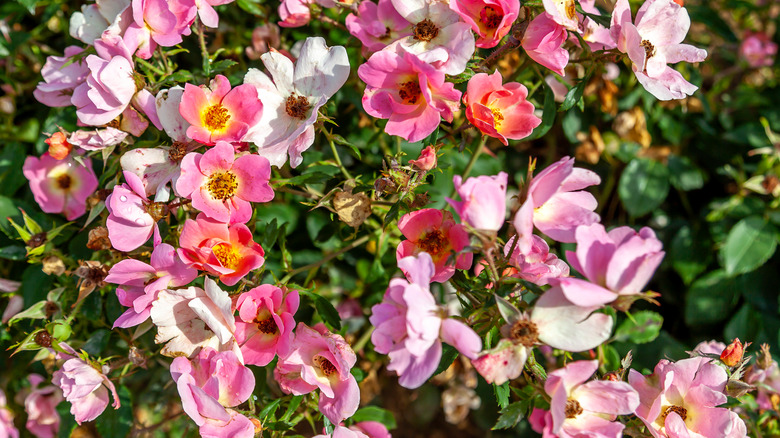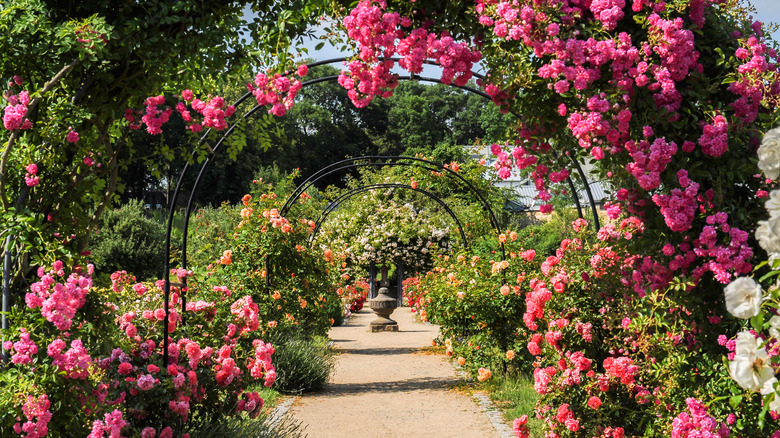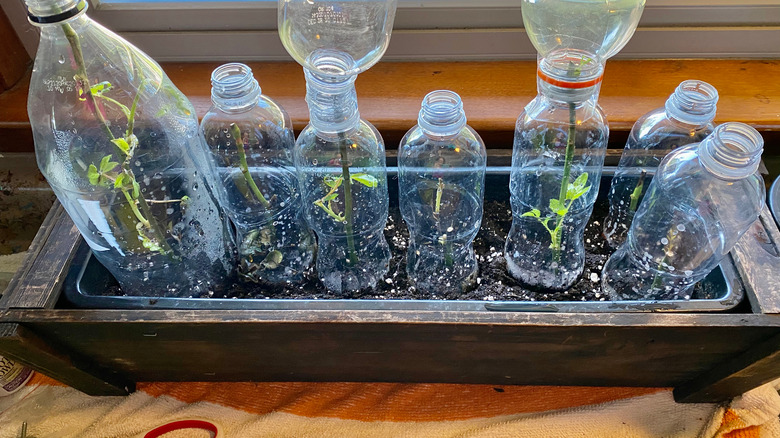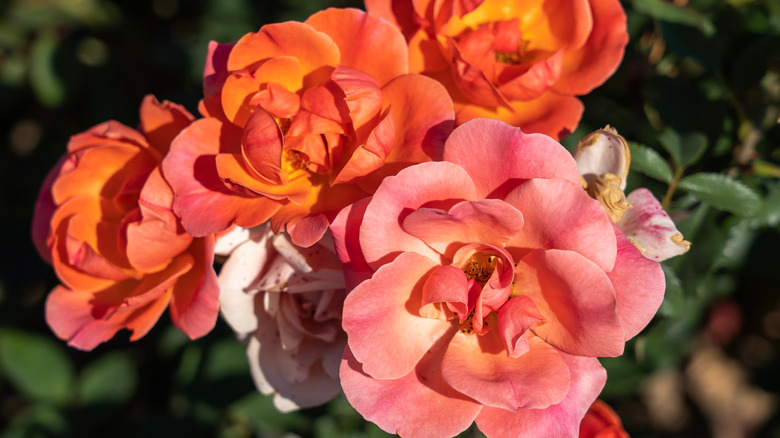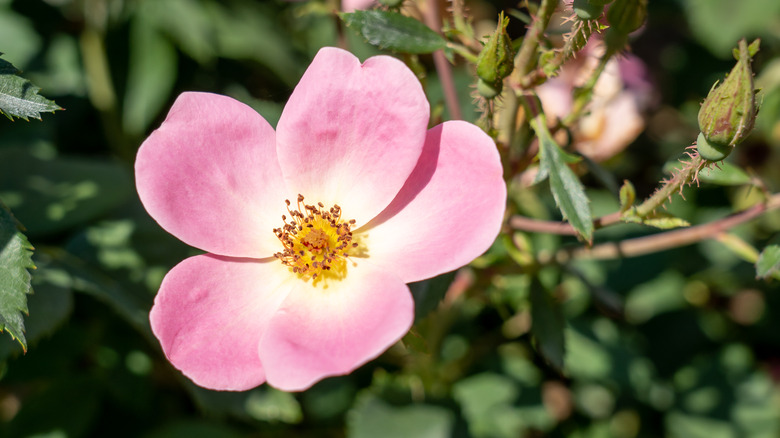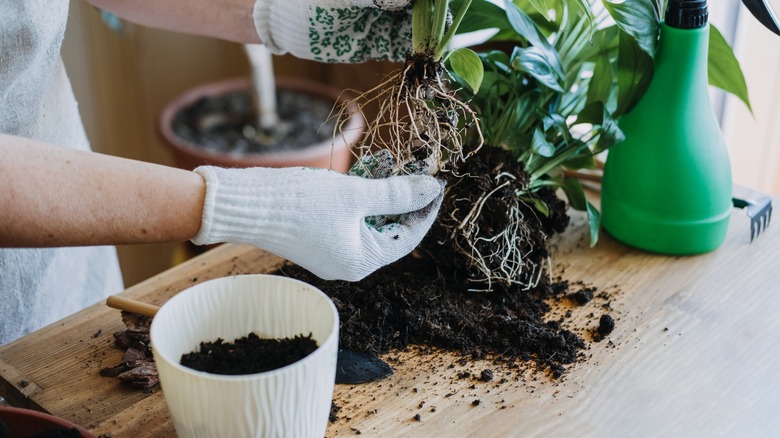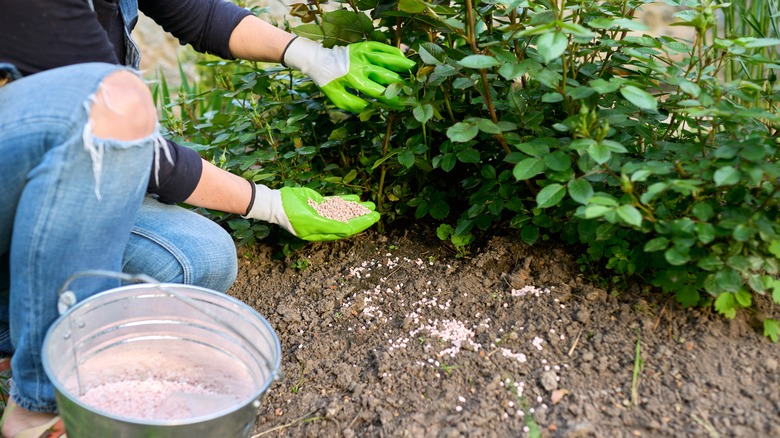Knock Out Roses: Everything You Should Know Before Planting
Rose bushes (Rosa sp.) are a beautiful addition to any garden, but they require intensive maintenance and are generally difficult to grow. A simpler option to care for, the original Knock Out roses (Rosa radrazz) were specifically bred by horticulturalist William Radler of Knock Out Roses to require minimal maintenance. According to the company, as time went on, the Knock Out brand began to offer additional beginner-friendly rose bush varieties discovered or bred by other gardeners.
At the moment, the Knock Out brand offers both full-size and miniature rose bushes. Full-size bushes come in different shades of pinks, reds, whites, and pale oranges. So long as they are trimmed once per year, in line with the brand's instructions, they will reach around 3 to 4 feet tall and 3 to 4 feet wide at full maturity. Miniature rose bushes are only available in red, and will reach about 1 ½ feet in height.
How to use Knock Out roses in the garden
Whether you're growing a massive flower bed or looking for a few accent plants to improve your landscaping, Knock Out roses are a great way to add a pop of color and beauty to your garden. Wondering which spot will give your roses the best chance to thrive? According to Almanac.com, rose bushes love the sun, so you should try to avoid placing your Knock Outs underneath trees or other tall, leafy plants. Similarly, avoid planting the roses near large structures that will block the sun for most of the day.
Depending on which size of Knock Out rose bush you purchase (full-size or miniature), you may find that they pair nicely with other flowers, which can help to fill in the gaps between multiple bushes and add visual and textural variety. If you're opting for the larger bushes, you might even want to combine several different color varieties of Knock Outs, resulting in different sprinkles of color while keeping your maintenance routine consistent.
How to grow Knock Out roses
Since Knock Out roses are only sold as small bushes, you won't need to worry about planting seeds or caring for a tiny sprout. That being said, you may have success with propagating a new plant or two from a healthy established plant. According to Gardeners' World, it's best to take a cutting from your rose bush in the spring or early summer, since that is when it's easiest to propagate a new plant. You'll want each cutting to be about 9 inches long with most of the leaves removed (except for those at the top). Dip the cut end of the stem in a rooting solution and plant it in a pot filled with compost or nutrient-rich soil.
It's important to keep the soil damp for newly propagated plants. While your cuttings are in pots, a simple solution is to water them and then place a bag over top to trap moisture. Continue to keep the soil moist until you're sure that roots have developed. Eventually, you'll want to acclimate indoor cuttings to outdoor weather so you can plant them in your garden. According to Stark Bros, this can be done by gradually leaving your plants outside for a little bit longer each day (ideally in the shade to start, then gradually spending more time in the sun). Once your plants can spend all day outdoors without their leaves browning or wilting, you'll know they are ready to be planted in the ground.
How to care for Knock Out roses
Although Knock Out roses have been bred for characteristics that make them easier to care for, they'll still require a bit of maintenance to look their best.
According to Knock Out's care guide, the brand's roses need at least 6 to 8 hours of sunlight per day — a figure that is roughly on par with ordinary rose bush requirements. The care guide also states that Knock Out bushes do best when they are planted in soil with a neutral pH level between 5.5 and 6.5. Since rose bushes generally tolerate a soil pH of 5.5 to 7.0 (via Gardening Know How), you may have a little bit of leeway. However, for optimal results, we do recommend sticking as close as possible to the levels recommended by Knock Out. The Home & Garden Information Center at Clemson Cooperative Extension notes that if your garden soil's pH is not suitable, you can use lime or aluminum sulfate to increase or decrease it, respectively.
Knock Out rose varieties
Due to their success, the Knock Out brand has come out with 11 varieties of rose bushes. According to their website, each plant has a slightly different appearance, color, and grow size (though all of Knock Out's full-size plants are at least 3 to 4 feet tall), allowing you to choose the best fit for your garden and landscaping goals. If you're not sure where to start, we'd recommend looking at the following bushes:
-
Rosa radrazz: The original bloom is resistant to black spot, one of the most infamous rose-bush killers, and produces brilliant red and hot pink flowers.
-
Rosa radtko: This variation is also resistant to black spot, but produces a fuller flower with overlapping petals that more closely resembles a standard rose.
-
Rosa radcon: With stunning hot pink petals that fan out rather than overlap, this variety's roses resemble anemone flowers.
-
Rosa radcor: Also known as the Rainbow Knock Out, this beautiful variety's petals fade from a coral hue on the outside to a radiant yellow center.
-
Rosa radsunny: Another bush with stunning ombre petals, the Rosa Radsunny features a calming cream on the outer edges that brightens into a vibrant yellow center.
-
Rosa meibenbino: As the only mini Knock Out rose bush at the moment, this variety has bright red petals and grows to about 1 ½ feet tall.
Are Knock Out roses toxic?
If you have pets or curious children running around, you might be worried about whether or not Knock Out roses can be dangerous. Fortunately, according to the American Society for the Prevention of Cruelty to Animals, rose plants are non-toxic to cats, dogs, and horses. Since Knock Out rose varieties are specific breeds of those regular roses, you can rest assured that they too are non-toxic. Roses are also generally hypoallergenic (meaning that they do not cause allergic reactions) and non-toxic to humans, although in some rare cases Hypoallergenic Homes explains that people may be allergic to their pollen.
That being said, non-toxic plants can still cause harm. In particular, rose bushes are known for their prickly thorns. If you're worried about a pet or small child getting tangled in or hurt by the thorns, it may be best to keep them away from your Knock Out roses. Alternatively, you might want to opt for a plant with a smooth stem.
How to repot Knock Out roses
Since Knock Out roses are bred to be more resilient than most rose bushes, you can follow best practices for traditional rose bush repotting. You may even have a little more room for error than you would with a standard rose plant. Mercury News advises that it's generally best to repot roses during the winter. While you can still repot roses at other points during the year, flowers are generally less active during the cooler months which means that they'll have less to deal with while acclimating to their new conditions.
According to Savvy Gardening, you should always select a pot between 8 and 15 gallons for your rose bushes. You should also ensure that it has holes at the bottom since roses require soil with proper drainage. Once you've chosen your pot, fill it about ⅔ of the way to the top with a combination of two parts potting mix to one part compost or manure. Then, place your rosebush inside and fill the rest of the pot with the same mixture. Finally, water the soil generously to help encourage roots to continue growing.
How to fertilize Knock Out roses
While Knock Out's website says that their plants do not require fertilizer (or most other routine maintenance, beyond watering), they do acknowledge that rose fertilizer can be used to give their plants some extra food. That being said, like with most plant varieties, gardeners have to be careful about when and how they apply fertilizer to Knock Out roses.
For best results, Knock Out recommends holding back on fertilizer at first. Wait until your plants have fully blossomed, which should occur in the spring or early summer. Furthermore, you'll want to cease fertilizing altogether by the end of the summer, so the plants can stop sending out new growth and instead settle into their dormant phase.
When fertilizing most plants, it's very important to keep in mind that the fertilizer should generally only be applied on damp soil. According to Gardening Know How, if fertilizer is applied to dry soil, you run a higher risk of burning the plants. Similarly, you can also burn plants by applying fertilizer to wet leaves. Careful application will keep your rose bush — and any surrounding plants — looking their best.
